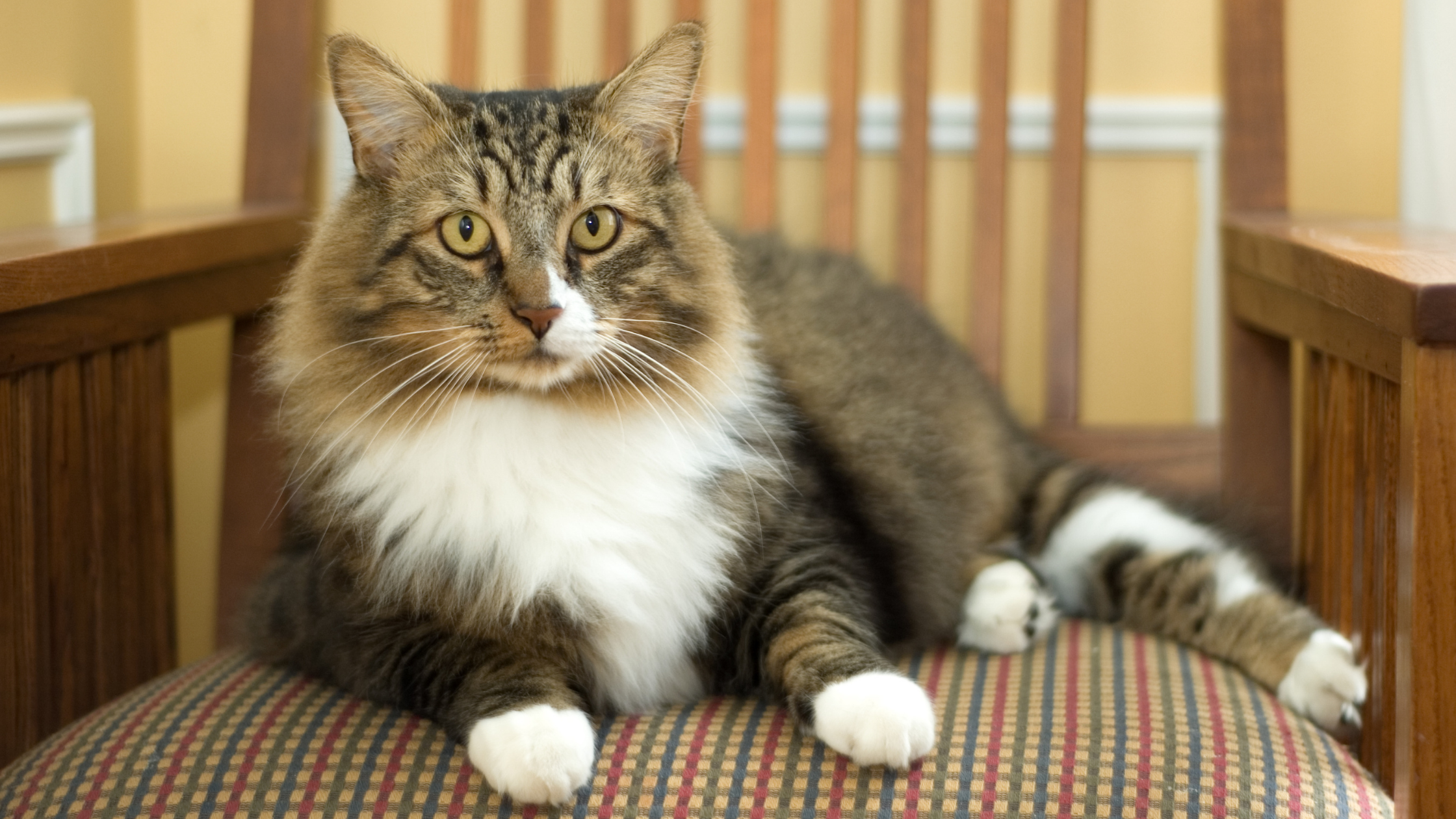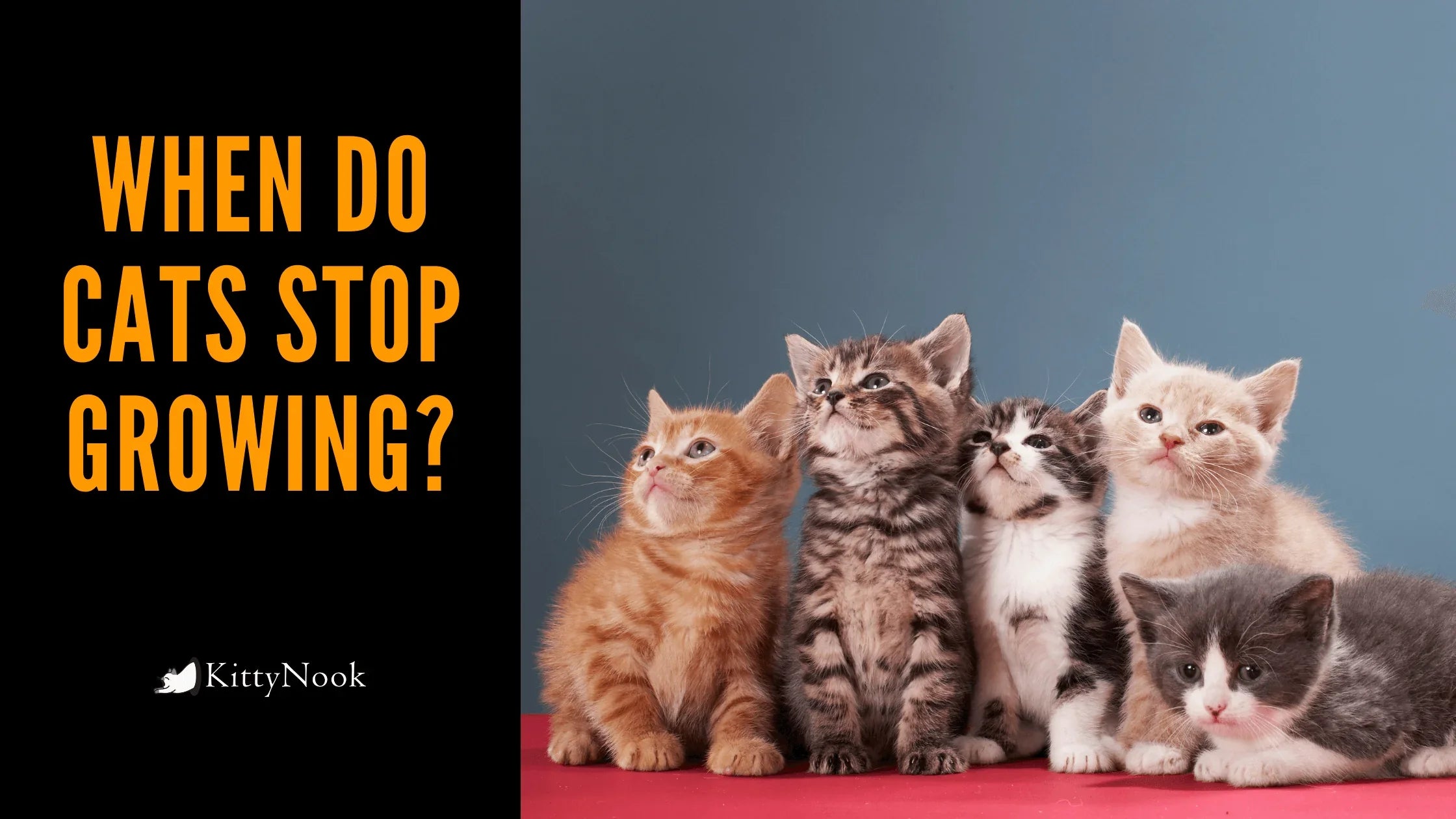Before we learn how and when cats grow, it's good to recognize the primary life phases. Of course, the exact dates vary from cat to cat. However, the feline life process can be broken down right into five stages:
Zero to 6 months old: This is the fastest development stage. Your kitty cat will go from newborn (eyes closed, relying upon Mom for everything) to playful, interested kittens creating chaos in your house.
Kitties will rapidly gain weight during this moment. For example, a kitten will get 0.25-0.5 pounds weekly in those very early weeks till they have doubled their birth weight by weeks 10-12.
This is also the moment that socialization is crucial. To keep your kitty from ending up being reserved, an ample amount of communication, as well as love, is vital. Unfortunately, feral kittens do not have any socializing with humans in the stage of their lives, which is why they grow up avoiding us.
In this phase, kitties are fluffy, with downy fur, rounded faces, big toe beans (paws too), and huge eyes. They have sharp, tiny teeth, as well as small, fragile bones. They're likewise very energetic and also lively. They shed their baby teeth around ten weeks. By six months, they have their adult teeth. Their facial features will also become more prominent and also refined around 3-6 months.
Six months to one year: A kitty's development rate decreases throughout this stage. Many vets will consider a kitty full-grown by one year. They can additionally shift from kitten to grown-up cat food during this stage. But depending on a cat's breed, some will continue to grow and need to be on kitten food until 2-years old.
You can see what your cat looks like when it maturates in this stage. Numerous small domestic felines will stop growing around 12-16 months of age; the largest cat breed like Maine Coon, will continue growing until four and even five years old! However, in general, the facial features will still grow more noticeable, like an adult cat.
This is your cat's teen stage. They might be defiant, unruly, and frequently on the move. They've become slender and can look lean.
This is also the time when they reach sexual maturity. For example, a male cat can fertilize another cat, and a female feline can get pregnant. During this stage, your vet might advise spaying or neutering your kitten or keeping them far from other cats to prevent breeding.
1 to 3 Years: Your cat is a grown-up at this stage. It might proceed to grow slowly. The majority of cats stop growing around 18 months. Your feline friend might appear like a lean adult throughout this time.
3 to 6 Years: These are considered the prime years of your cat's life. More giant breeds will keep growing for a year or two. However, the smaller-sized breed has become remarkable grown-up cats by now. Pedigree or not, both will invest their days searching for that catnip mouse, eating their tasty morsels from the food bowls, grooming themselves, and taking naps
7-10 Years: You have a fully matured cat at this point. Like human beings, pet cats become less energetic as they age. They still play but are much more laid back. There is no more development other than perhaps around the tummy. They're also more susceptible to putting on weight and developing health concerns like kidney disease and diabetes mellitus. Proper nutrition and lots of workouts will fend off very early health issues connected to aging.
11-14 Years: These are the elderly or senior years. Age-related diseases can turn up, and your cat will begin to slow down.
15+ Years: These felines have gotten to the senior citizen stage of life. They may lose weight from age-related concerns, and their hair may lose some of its previous lusters. Nonetheless, that regal, caring floof is still there, waiting on the chance to snuggle and nap in your lap.
Other Factors That Can Affect The Growth Of Your Cat

Gender: Male cats grow slower and bigger than their female counterparts. A man can mature to 2 pounds.
Birth Order: The farther down the birth line a kitten falls, the smaller it may be as an adult; this especially applies when many kittens are in a litter. Additionally, way too many kitties can taper the amount of milk readily available from the mother to kittens. Kittens with inadequate nutrition grow slower and wind up smaller.
The Health of Parents: The wellness of the moms and dads matters. If your kitty comes from a well-loved and spoiled momma, chances are your kittens will have the opportunity to be in the full growth size that its genetics determined. Otherwise, your furbaby can be smaller when completely grown.
Diet: Proper nourishment means correct development. Your kitten needs to get a well-balanced dietary regimen of kitten food for the initial year of its life. Some may need kitten food much longer; however, most do until they are 10 lbs. Cats can shift from kitten to adult food between 10-12 months old. Your vet can encourage what the right option for your cat is.
Genetics: Some hereditary aspects can signify if your feline will be small in adult size. They consist of dwarfism and bone defects. Your vet will discover any irregularities with your kitty throughout the regular exams.
Breed: A cat's breed also influences its rate of development. Unsurprisingly, more giant cat breeds take longer to stop growing. For example, Maine coon felines, the larger breed of cats, can take four years to get their full size.
Neutered or Not: Neutering or spaying doesn't just affect how huge your cat will become like scientists assumed years earlier, but it can change their metabolic rate, suggesting they can put on weight if they prefer resting to playing.
Many veterinarians will certainly advise neutering at six months, but shelters and also rescues have been spaying kittens earlier to reduce the chance of unintentional litters. The weight limit for very early neutering is 4 lbs.
When Do Cats Stop Growing?

Many specialists concur that cats reach adulthood at 12 months old, which implies this is the age where their characteristics have matured and strengthened into how they'll act throughout their grown-up lives. However, a cat doesn't grow in uniformity. Felines reach full size anywhere between 18 months to 4 years of age.
How To Tell When A Cat Is Fully Grown?

While it holds that felines can continue to grow after the first year, their development rate will decrease dramatically afterward. If you're not keen, you might not even notice that they're growing! A good method to know when your feline has stopped growing is to measure a cats' elevation (the measurement from paws to the top of shoulder) in addition to size. If you measure your cat every month, you'll notice when those measurements are changing.
A cat's weight can also reveal its maturation level or approximate age. You can estimate your feline's adult weight by weighing them when they're 16 weeks old and increasing that number. You can anticipate that number will be appropriate around your cat's grown-up weight. It's not exact. However, it's an excellent quote. Similar to measuring a cat's elevation and weight, evaluating a pet cat monthly can likewise help determine when they get to complete size.
Regardless of how big your pet cat obtains, it will always need giant-sized sections of love, affection, and also cuddles!
How to Measure Your Cat?

Height: Paw to shoulder, minus the tail.
Size: Nose to the base of the tail.
Weight: The graphs use a grown-up weight range.
How Large Will Your Cat Get?

After looking at all the different elements contributing to the cat's growth, and when their development stops, you will know that each cat is different. Therefore, the most effective method for you to make sure your feline gets to the full magnificence of cathood is to make sure you feed them a nourishing, well-balanced diet, lots of exercises, as well as tons of love.
If you do that, you might have a large cat or a tiny cat, and it may take one year or four years; but you have a loving feline buddy through all the growth stages of their lives.




















